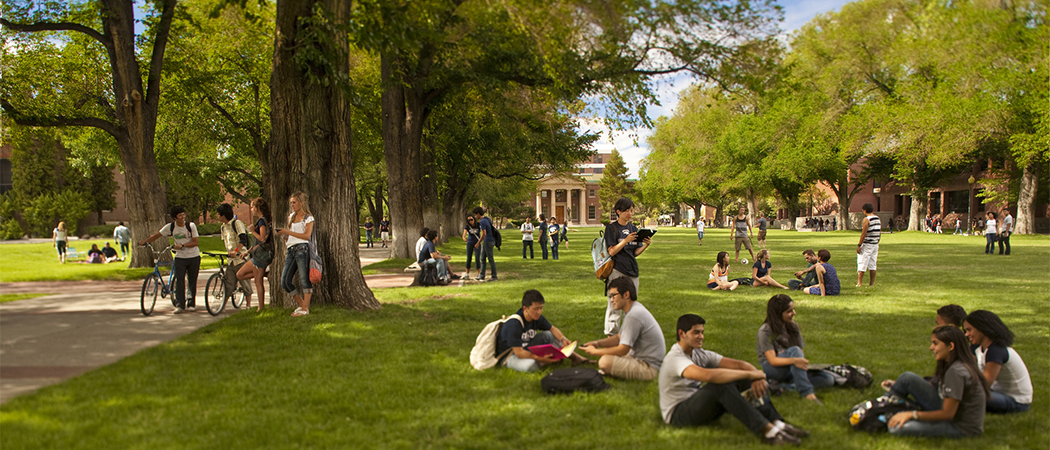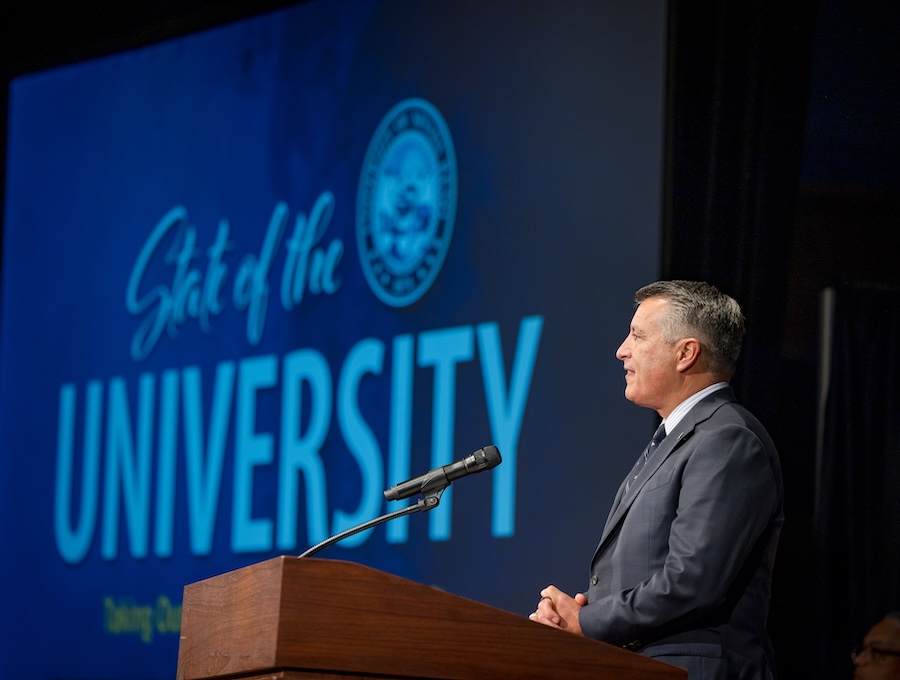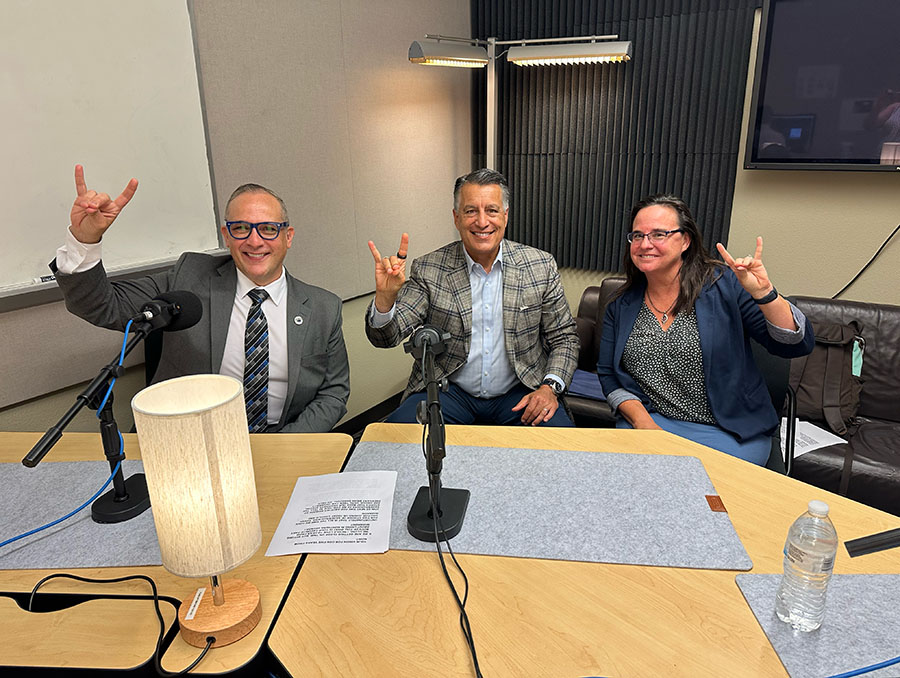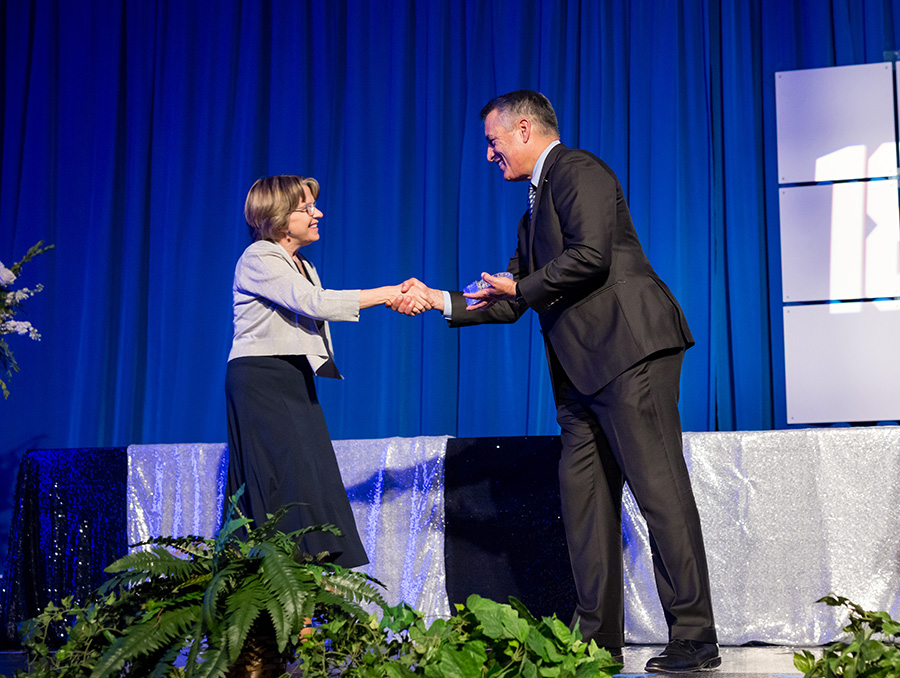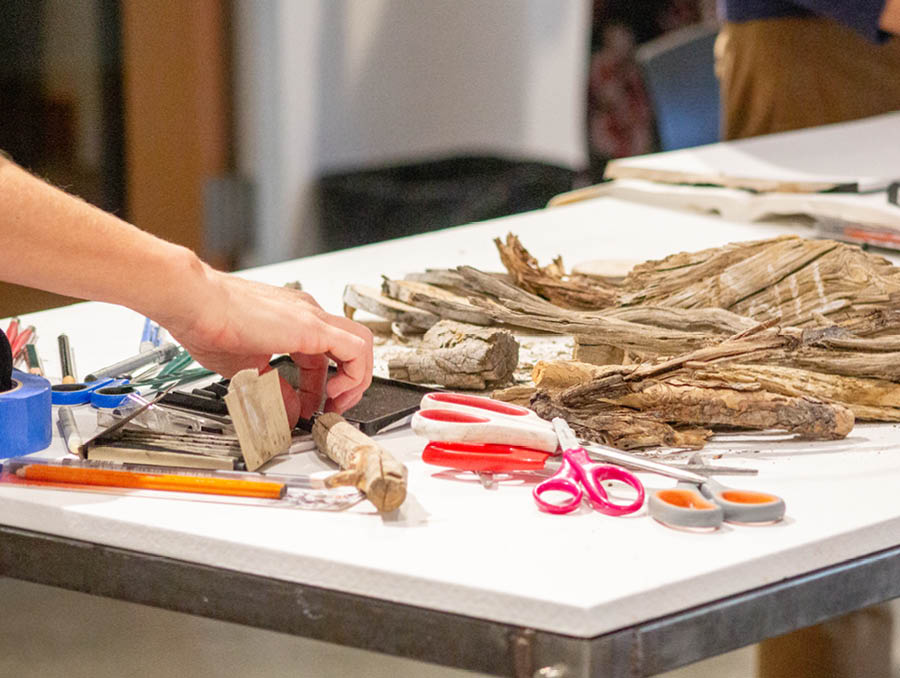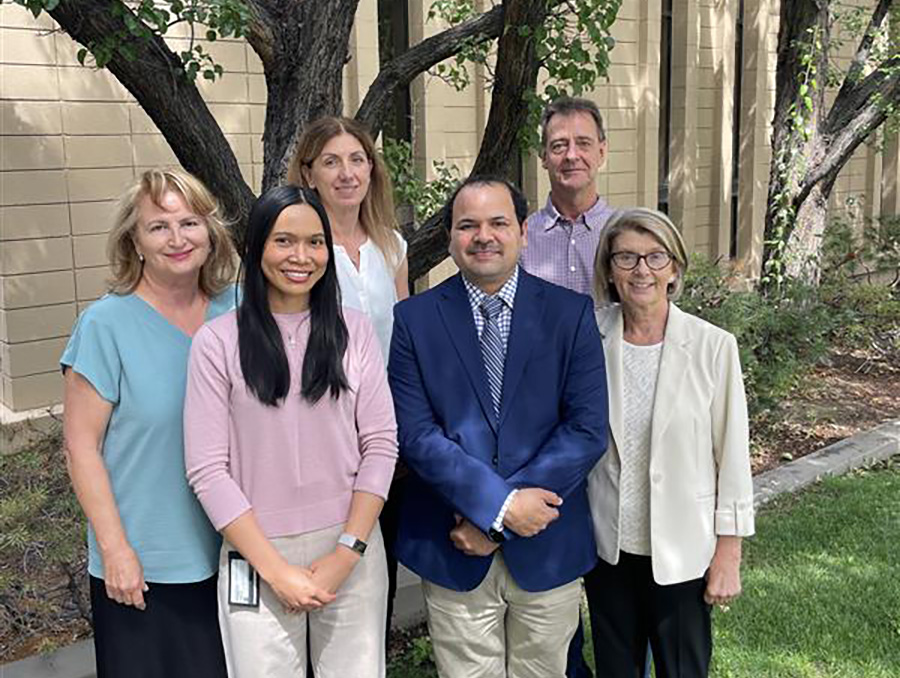Water-use, energy, transportation, recycling, composting and construction practices are part of the University’s environmental stewardship equation and commitment
Peavine Hall, opened August 2015, is the University’s first facility built to LEED Gold standards. However, the University’s commitment to Leadership in Energy and Environmental Design constructions standards is not new. Over the past decade, every new building – a list that includes major projects such as the Joe Crowley Student Union, Mathewson-IGT Knowledge Center and Center for Molecular Medicine – has been built to the equivalent of LEED Silver standards.
Large-scale efforts aimed at environmental sustainability across the University also include improved water and energy efficiency, expanded programs to encourage alternative transportation and recycling, and increased composting and organic landscape practices. Propelling these big efforts are the contributions of individuals across the University community.
“Every incremental gain we make has the potential to have a large influence,” John Sagebiel, assistant director of environmental programs in the University’s Department of Environmental Health and Safety, said. “For example, we recycle about 400,000 pounds of paper a year on campus. A piece of paper doesn’t weigh much, so this shows that the contributions of individuals make a difference.”
Sagebiel defines environmental sustainability as meeting our needs today without compromising the ability of future generations to meet their needs. In a recent KUNR interview, he and University President Marc Johnson joined KUNR General Manager David Stipech to discuss other aspects of the University’s long-term commitment including the development of solar and wind energy for some buildings, the incorporation of sustainability into the curriculum of many of the colleges and the use of recycled materials in art projects.
Learn more about the University’s journey toward environmental sustainability through the following series of recent Nevada Today articles:
WATER-WISE ACTIONS ADD UP TO CONSERVATION. From efficient irrigation systems and plumbing fixtures to applied research, the University is contributing to reduced regional use of water.
GETTING AROUND ON AND BEYOND CAMPUS. The University offers and encourages green, alternative transportation options, and features charging stations for electric vehicles.
NEW CONSTRUCTION TAKES THE LEED. Environmental standards are the norm for new University facilities.
ENERGY EFFICIENCY LEADS TO SAVINGS. Conservation steps result in 19 percent reduction in per-square-foot energy use.
A TRULY GREEN CAMPUS. The University strengthens its commitment to a sustainable environment through new green waste recycling program.
